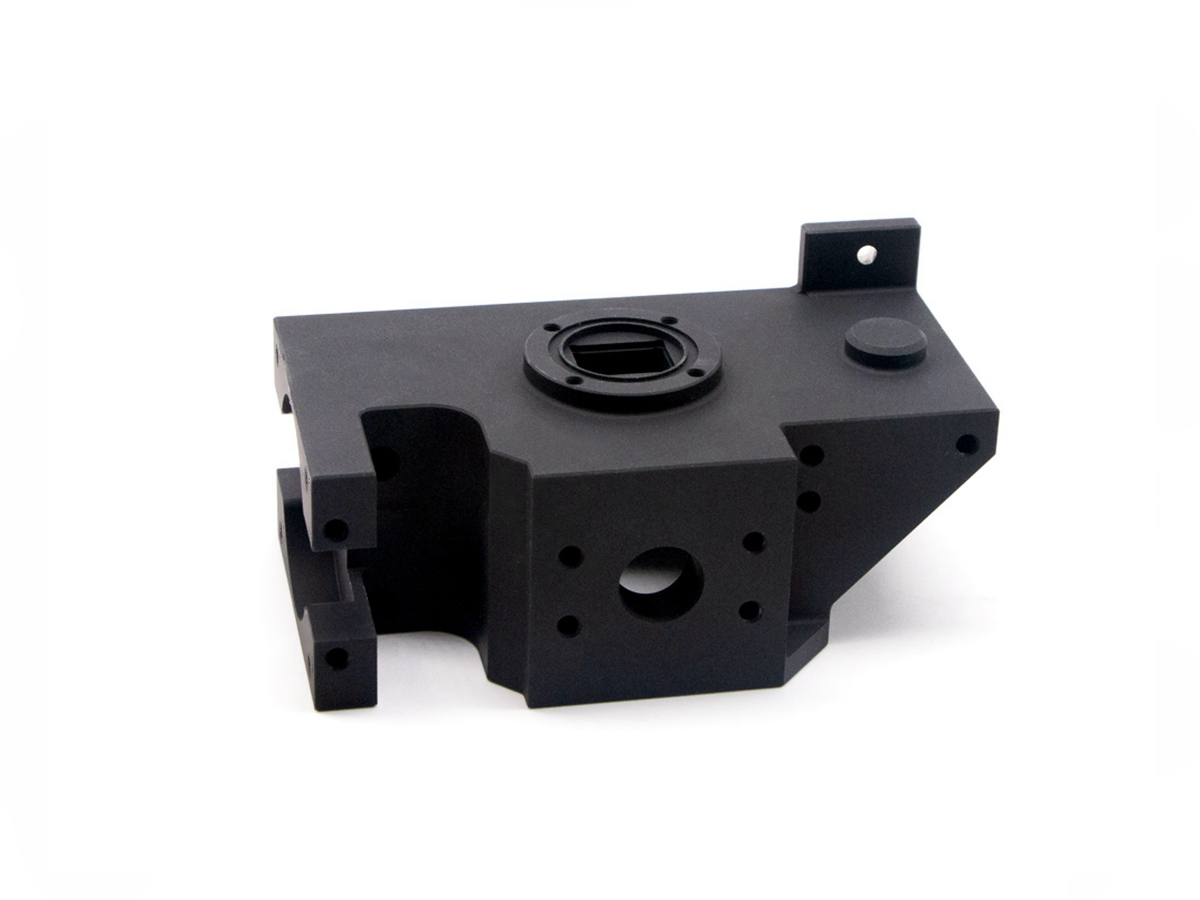Advanced CNC Machining Solutions for Robotics Actuators and Mechanisms
Introduction to CNC Machined Robotics Actuators and Mechanisms
In advanced robotics and automation systems, the precision and reliability of actuators and mechanical components directly influence overall system performance. Actuators and mechanisms require materials and processes that ensure high durability, precision, and consistent operation under dynamic conditions. Materials commonly utilized include aluminum alloys (7075, 6061), stainless steel (SUS304, SUS316), titanium alloys (Ti-6Al-4V), and engineering plastics (PEEK, Acetal).
By employing state-of-the-art CNC machining services, these actuator components are crafted to precise specifications, guaranteeing optimal function, minimal friction, reduced wear, and maximum reliability in robotic applications.
Material Performance Comparison for Robotics Actuators
Material | Tensile Strength (MPa) | Density (g/cm³) | Corrosion Resistance | Typical Applications | Advantage |
|---|---|---|---|---|---|
540-570 | 2.8 | Good | Lightweight actuator housings, joints | Excellent strength-to-weight ratio | |
515-620 | 8.0 | Excellent | Precision actuators, medical robotics | Superior corrosion resistance, hygiene | |
950-1100 | 4.43 | Excellent | High-load actuator arms, linkages | Outstanding strength, fatigue resistance | |
90-100 | 1.32 | Outstanding | Lightweight gears, actuator bushings | Excellent wear resistance, lightweight |
Material Selection Strategy for Robotics Actuator Components
Selecting materials for robotics actuators involves considerations such as load capacity, weight reduction, corrosion resistance, and frictional properties:
Aluminum 7075-T6 is ideal for lightweight actuator housings and mechanical linkages, providing high tensile strength (up to 570 MPa), reducing overall robotic system weight while maintaining durability.
Stainless Steel SUS316 is suited to precision actuators used in harsh or sterile environments, delivering exceptional corrosion resistance (ASTM B117 >1000 hrs), reliability, and easy sterilization.
Titanium Ti-6Al-4V offers exceptional strength (950-1100 MPa tensile strength), outstanding fatigue life, and corrosion resistance, making it the preferred choice for critical actuator components and heavily loaded linkages.
Engineering plastic PEEK provides excellent dimensional stability, wear resistance, and low friction, and it is suitable for actuator gears, bushings, and sliding mechanisms that must operate with minimal lubrication.
CNC Machining Processes for Precision Robotics Mechanisms
CNC Machining Process | Dimensional Accuracy (mm) | Surface Roughness (Ra μm) | Typical Applications | Key Advantages |
|---|---|---|---|---|
±0.005-0.01 | 0.2-0.8 | Complex actuator housings, linkages | High precision, excellent surface finish | |
±0.005-0.01 | 0.4-1.2 | Rotary actuator shafts, sleeves | Superior rotational precision | |
±0.005-0.02 | 0.4-1.0 | Intricate mechanical components | Complex geometries, precision control | |
±0.002-0.005 | 0.1-0.4 | Precision actuator gears, cams | Ultra-precise dimensions, smooth finishes |
CNC Process Selection Strategy for Actuator Components
Choosing the correct CNC machining methods for robotic actuators depends on component complexity, dimensional tolerance, and mechanical function:
Complex actuator housings and sophisticated linkage mechanisms demanding ultra-tight tolerances (±0.005 mm) and excellent finishes (Ra ≤0.8 µm) rely on 5 Axis CNC Milling.
Rotary actuator components such as shafts and sleeves, requiring precise rotational accuracy and minimal runout (±0.005 mm), benefit from Precision CNC Turning.
Precision Multi-Axis Machining is ideal for intricate components with complex internal geometries, such as specialized linkages and custom mechanisms, achieving an accuracy of ±0.005–0.02 mm.
For actuator gears, cams, and other high-precision mechanical components requiring extremely precise dimensions and smooth finishes (Ra ≤0.4 µm), CNC Grinding is essential.
Surface Treatment Performance Comparison for Actuator Components
Treatment Method | Surface Roughness (Ra μm) | Wear Resistance | Corrosion Resistance | Surface Hardness | Typical Applications | Key Features |
|---|---|---|---|---|---|---|
0.4-1.0 | Excellent | Excellent (ASTM B117 >1000 hrs) | HV 400-600 | Aluminum actuators, linkages | Enhanced wear, corrosion protection | |
0.8-1.6 | Moderate | Excellent (ASTM B117 >1000 hrs) | Unchanged | Stainless steel precision actuators | Superior corrosion resistance | |
0.2-0.5 | Exceptional | Excellent (ASTM B117 >1000 hrs) | HV 1500-2500 | High-wear actuator shafts, joints | High hardness, minimal friction | |
0.2-0.8 | Good | Excellent (ASTM B117 >500 hrs) | Unchanged | Medical robotics, smooth actuator surfaces | Superior finish, easy sterilization |
Surface Treatment Selection for Robotics Actuator Parts
Surface treatments enhance actuator reliability by increasing durability, reducing friction, and providing corrosion protection:
Aluminum actuator components benefit significantly from Hard Anodizing, offering superior hardness (HV 400-600) and excellent corrosion resistance (>1000 hrs ASTM B117).
Stainless steel actuator components used in medical or corrosive environments employ Passivation to achieve outstanding corrosion resistance without altering dimensional precision.
High-wear actuator parts like shafts and bearings use PVD Coating to provide superior wear resistance (HV 1500-2500), significantly extending service life and reducing friction.
Electropolishing ensures smooth actuator surfaces for medical robotics, offering excellent corrosion resistance and sterilization capabilities with Ra as low as 0.2 µm.
Typical Prototyping Methods for Actuator Components
CNC Machining Prototyping: Precision prototypes are ideal for verifying actuator function and precision fit.
Metal 3D Printing (Powder Bed Fusion): Quick, accurate prototyping for initial actuator testing and design validation.
Quality Assurance Procedures
Precision Dimensional Inspection (CMM): Tolerance verification to ±0.005 mm.
Surface Quality Verification (Profilometer): Ensuring actuator component surfaces meet stringent finish specifications.
Functional Load Testing: Evaluating actuator strength, torque, and fatigue life according to ASTM standards.
Non-destructive Testing (Ultrasonic & Radiographic): Structural integrity validation.
ISO 9001 Documentation: Comprehensive quality documentation for traceability.
Industry Applications
High-precision robotic arms and joints.
Medical and surgical robot actuators.
Automated manufacturing systems.
Related FAQs:
Why choose CNC machining for robotics actuators?
What materials provide the best performance for robotic mechanisms?
How do surface treatments enhance robotics actuator reliability?
What quality standards apply to CNC machined actuator parts?
Which industries benefit from precision CNC robotics actuators?

